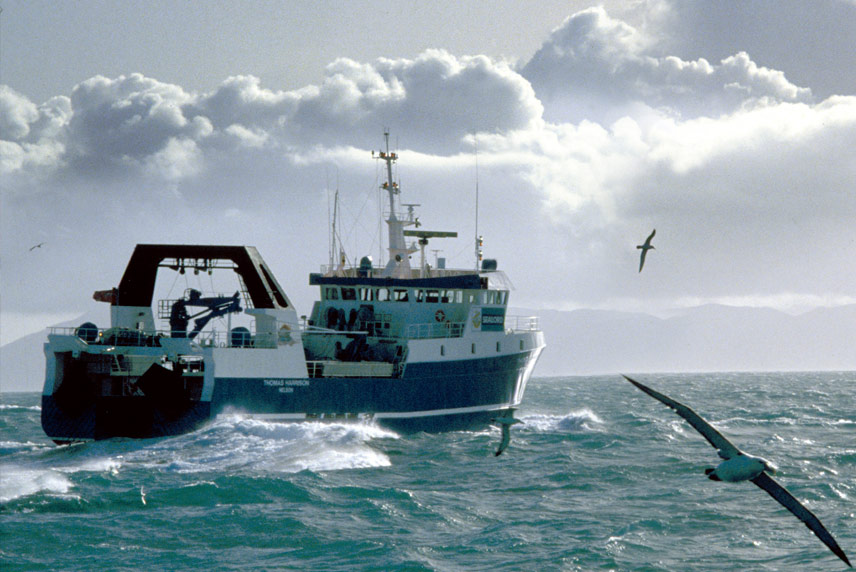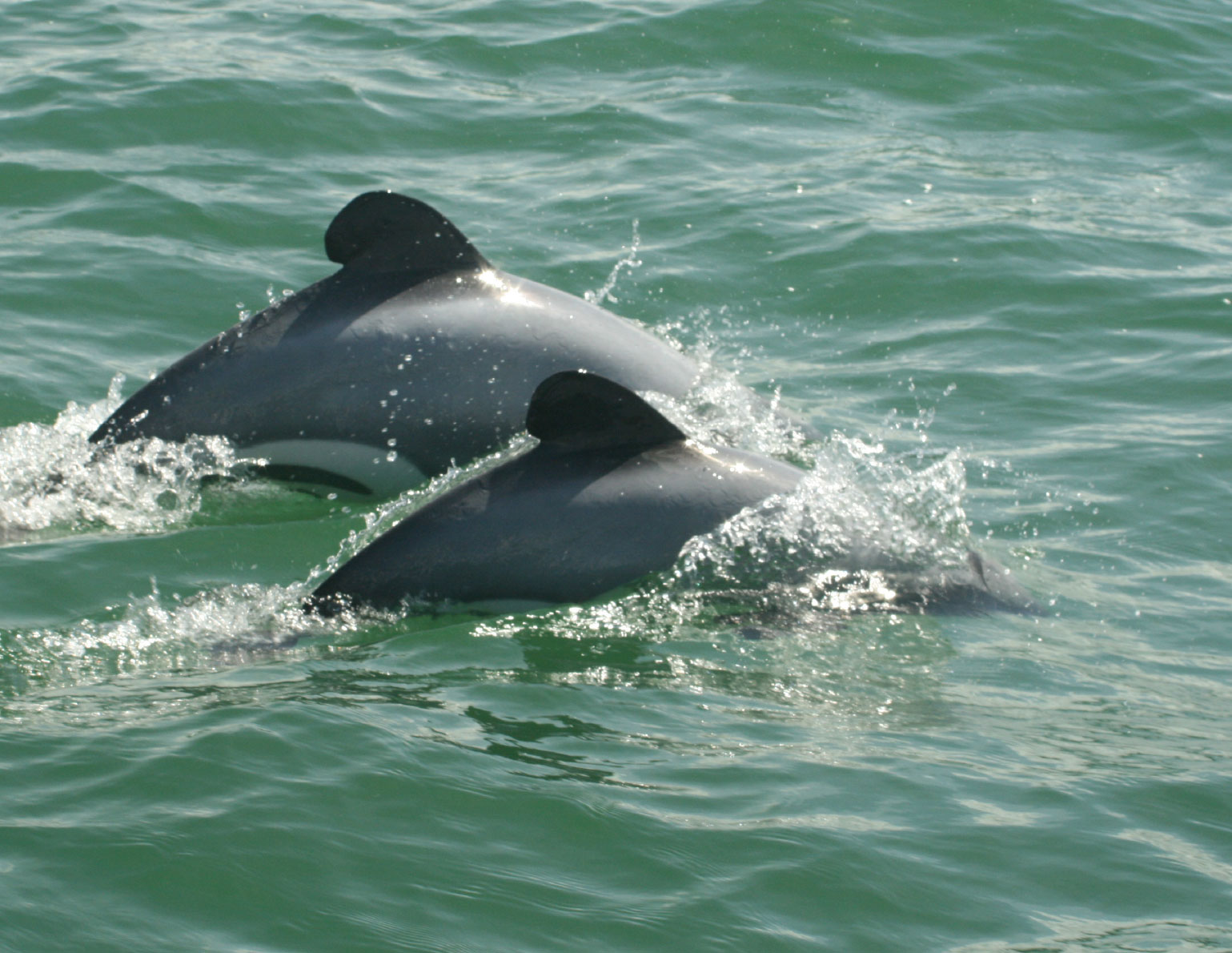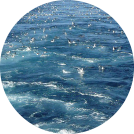Associated species.


New Zealand uses a risk-based approach.
New Zealand’s management of interactions between commercial fishing activities and other non-commercial species is broadly based on the status of associated species populations and risks to those populations. Risk assessments highlight priorities for investment and management action.
Both the Fisheries New Zealand and the Department of Conservation have regulatory responsibilities for managing interactions between commercial fishing activities and associated non-commercial species.
Seabirds
New Zealand is often referred to as the seabird capital of the world – 96 breeding seabird taxa occur here. These include albatross, petrels, shearwaters, penguins, shags, and many others. For some species groups, the diversity found in New Zealand is greater than anywhere else in the world.
Seabird interactions with commercial fishing activities are best understood for the longline and trawl fisheries. Across all New Zealand commercial fisheries for which information is available, annual potential seabird fatalities are estimated at around 14,400. Estimated seabird captures in fisheries using the trawl and surface longline methods have decreased since the early 2000s.
The four species populations assessed as at risk of being incidentally caught in New Zealand fisheries at levels in excess of their sustainability limits are black petrel (Procellaria parkinsoni), Salvin’s albatross (Thalassarche salvini), flesh-footed shearwater (Puffinus carneipes), and Westland petrel (Procellaria westlandica).
Policy guidance for managing risks to seabird populations due to commercial fishing activities is provided by New Zealand’s National Plan of Action for Seabirds. Requirements under fisheries law relevant to the management of seabird interactions with commercial fishing include;
- Reporting requirements that apply when seabirds are caught in commercial fishing operations,
- Prohibition of net-sonde monitor cables,
- Requirement to use one of three specified seabird bycatch reduction devices on trawlers > 28 m in overall length (streamer lines, bird bafflers, or warp scarers),
- Requirement to use streamer lines on bottom longline vessels > 7 m in length, night-set, and line-weight in specified combinations, and manage fish waste discharge, and
- Requirement to use streamer lines, night-setting and line-weighting in specified combinations on surface longline vessels.
Non-binding initiatives addressing seabird interactions with fishing activities include vessel-based management plans and liaison activities, capacity-building amongst vessel operators and crew, research and monitoring, and operational conformance measures.
Marine Mammals
Since 1992, captures of 16 taxa of marine mammals have been reported to result from commercial fishing activities in New Zealand. These captures include two species of baleen whales, nine toothed whale taxa, three species of seal and one species of sea lion.
New Zealand’s management of interactions between marine mammals and commercial fishing activities is broadly based on the status of marine mammals and risks to their populations. Species-specific risk assessments have been conducted for two high-profile marine mammals, the Māui dolphin and New Zealand sea lion. A multi-species risk assessment is also underway.
The Māui dolphin is classified as Nationally Critical by the New Zealand Threat Classification System. An expert panel conducting the 2012 risk assessment concluded that the estimated level of human-induced mortality, including commercial fishing, is higher than the population can sustain. The most recent estimate of Māui dolphins aged one year or older is 63 animals (range 57 – 75). This range is higher than previously estimated.
The New Zealand sea lion risk assessment focused on the two best-known breeding populations, occurring at the Auckland Islands and Otago Peninsula. The greatest risks for the Auckland Islands population were disease (Klebsiella and hookworm), commercial trawl fishing, male aggression, trophic conditions (prey availability), and entrapment and death in mud wallows. Addressing any one of these risks was considered inadequate to resolve the population decline that is evident at the Auckland Islands. Instead, the assessment showed that a holistic view of addressing risks is required.
Management measures developed and implemented to manage fishing interactions with associated species are informed by the risk assessments described above. Species-specific actions are described in threat management plans, which have been completed for the New Zealand sea lion and Māui and Hector’s dolphins. Actions include area-based restrictions on fishing activity and increased monitoring of commercial fishing activities in some areas. Additional mitigation measures have also been put in place, such as the use of Sea Lion Exclusion Devices for all vessels in the southern squid trawl fishery.
Non-binding initiatives addressing marine mammal interactions with fishing activities include industry-led vessel-based risk management plans and liaison activities, research and monitoring, and operational conformance measures.
Fish Not Landed
New Zealand law clearly states the landing and catch reporting requirements for all commercially caught fish in New Zealand. For the 99 fish species managed within the Quota Management System (QMS), the law generally requires the landing and reporting of any catch.
However, the law also has provisions for legally returning fish to the sea. These provisions generally relate to sustainability or vessel safety purposes. They are;
- Being less than the minimum legal size (16 species have a Minimum Legal Size);
- Being allowed under Schedule 6 of the Fisheries Act (33 species have a Schedule 6 provision);
- Being necessary to ensure the safety of the vessel or any crew member;
- Being a part of fish, aquatic life, or seaweed lawfully processed on a vessel; or
- Authorised by a government-authorised observer.
For any fish species not managed within the QMS, catch may be landed or returned to the sea at the fisher’s choice. However, all such catches must be reported to the Government, irrespective of being landed or returned to the sea.
Notwithstanding the general requirement to land all catch of QMS-managed species subject to the regulated exceptions referred to above, it is known that there is some catch of QMS species that is illegally returned to the sea and not reported on any catch returns. Research by the National Institute of Water and Atmospheric Research (NIWA) estimated that for every kg of catch, approximately 6% of the catch is returned to sea. This includes fish both legally and illegally returned to the sea.

The OpenSeas report was prepared by a technical expert, with demonstrable knowledge and experience in the topic at hand. An internal fit-for-purpose review was conducted by the OpenSeas Programme Director, which may have included external scientific or operational expertise. An external scope and accuracy review was conducted by the relevant regulatory agency(ies) (i.e. New Zealand Government departments).
The report author was responsible for revising the report in line with recommendations from reviews and retains final responsibility for the report content.

